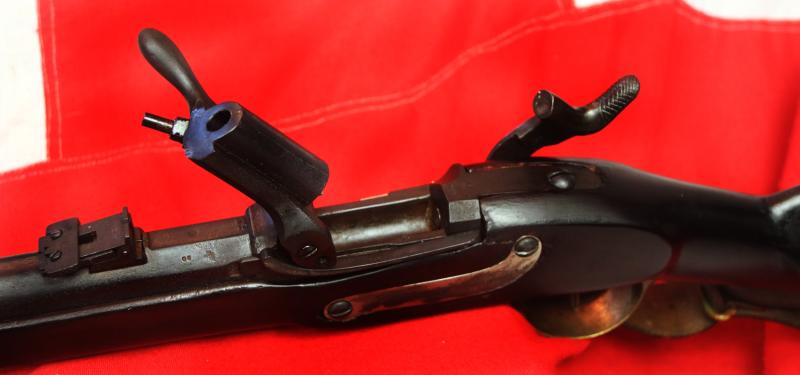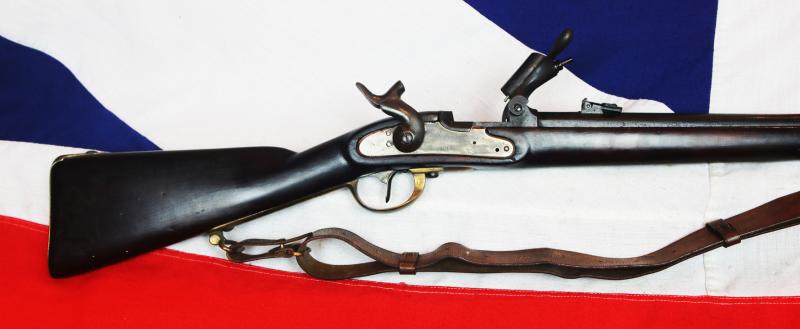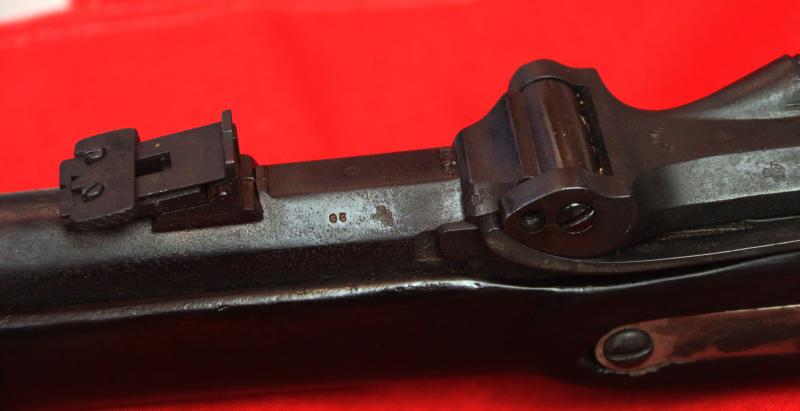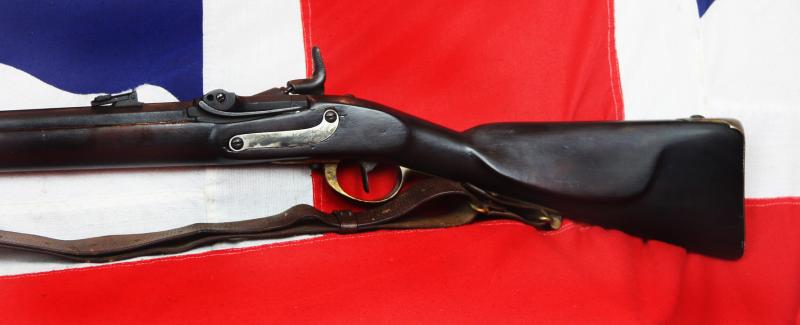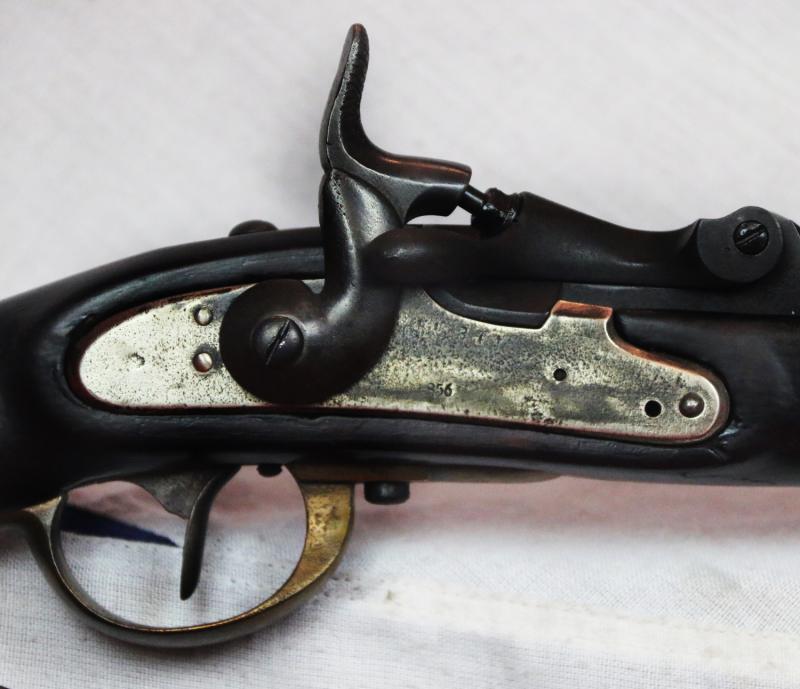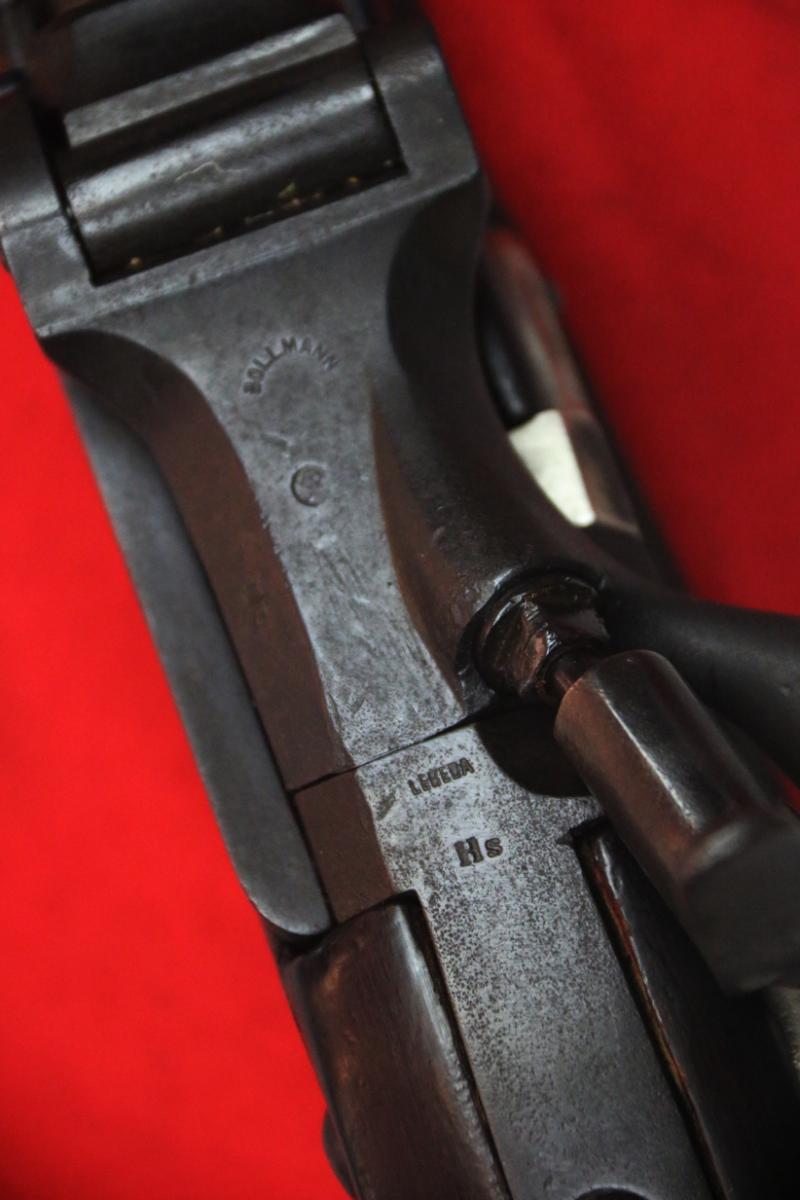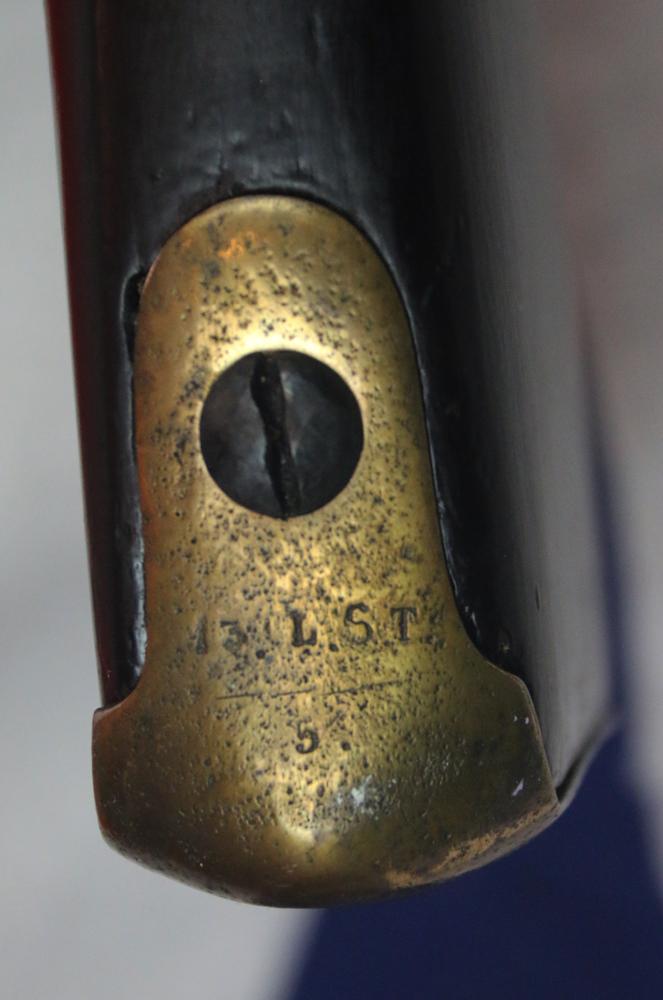A Very Scarce Austrian {Austro-Hungarian Empire} Model Lorenz 1854/67 Wänzl Jäger Rifle, Trapdoor Conversion
In good sound condition for age. With strap.
In 1866 the Austrians fought a disastrous seven week war with Germany, where the German breechloading needle fire rifles decimated the Austrians with their muzzle loading Lorenz rifles. The following January (1867), the Austrians adopted the Wanzl system for converting their muzzle loading rifles to breechloading cartridge arms. Six months later they adopted the rotary breech Werndl system for new rifles to be made by the newly formed firm of Steyr. This is the standard infantry model Wanzl, with total barrel length of about 37.5 inches and overall length of about 53 inches. The lock bears the original manufacture date of 1856, stamped in the Austrian method of only the last three digits, 856.
The Lorenz rifle was the third most widely used rifle during the American Civil War. The Union recorded purchases of 226,924 and the Confederacy bought as many as 100,000. Confederate-bought Lorenz rifles saw heavy use in the Army of Mississippi in 1863–64, with many of them being issued to re-equip regiments captured at the siege of Vicksburg and later exchanged. On the Union side, continental European firearms were mostly distributed to the Western armies—as such, the Lorenz Rifle was relatively uncommon in the Army of the Potomac (although two regiments of the famous Iron Brigade carried them) but heavily used by the Army of the Cumberland and Army of the Tennessee.
The Wanzl conversion is somewhat similar to the later Allin Trapdoor system, where a new receiver is attached to the old barrel, having a breechblock that flips up like the trapdoor. The locking system is unusual, being an internal rod that locks into the rear of the breechblock as the hammer falls. The tang is marked Labeda, the firm that did the conversion. The breechblock is marked Bollman. The barrel is marked 63 possibly indicating acceptance at Vienna (Wein) in 1863. Overall condition is about fine. The beech stock has a few assorted minor handling. The Wanzel is a very scarce gun, and would be an excellent addition to a collection of European military arms. Other examples that would fit into the breech conversion rifles would be the British Sniders, the French Tabatier, the Swiss Milbank-Amsler; the U.S. first and second Allin trapdoors, some of the Remington rolling blocks, and several others. Note- The Lorenz muskets were nominally .54 calibre and the conversion used a rimfire cartridge variously called any of the following: 13.9 x 33mm Wanzel Model 1867 rimfire; 14 mm rimfire Wanzl ; 14.3 x 32.3mm rimfire Austrian Wänzel; 14.3 x 32.3mm rimfire Wänzel Mod. 1869; 14.5 x 32.5mm rimfire Austrian Wänzel; 14 mm Scharfe gewehrpatrone or the 14 x 33mm rimfire Wänzel.
No licence required now simply an original antique collectors item.Section 58 (2) antique / obsolete calibre
Code: 25267



